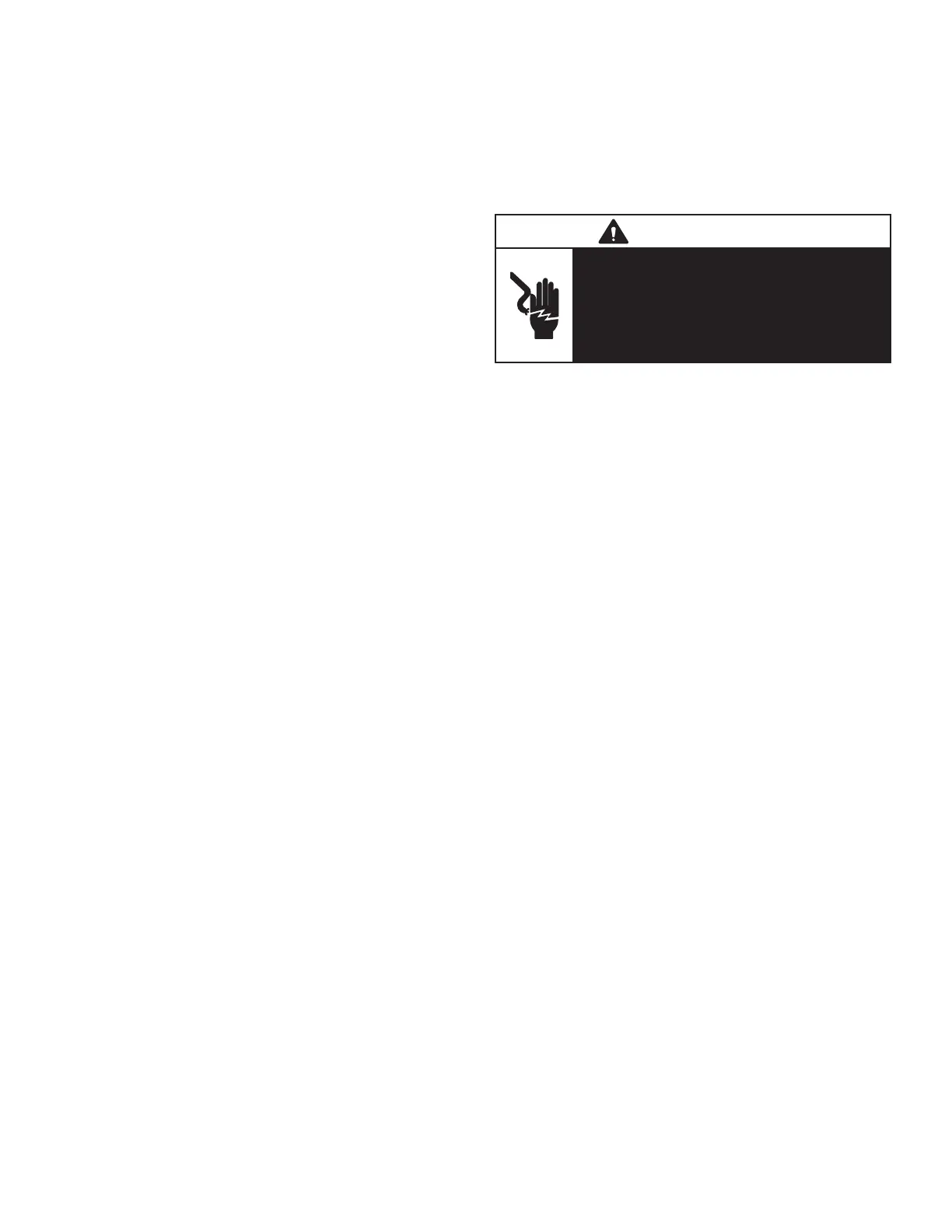Page 31
IV- START-UP OPERATION
A-Preliminary and Seasonal Checks
1 - Make sure the unit is installed in accordance with
the installation instructions and applicable codes.
2 -
installed for loose connections. Tighten as required.
Refer to unit diagram located on inside of unit
3 - Check to ensure that refrigerant lines are in good
condition and do not rub against the cabinet or
other refrigerant lines.
4 - Check voltage. Voltage must be within the range
company and have the voltage corrected before
starting the unit.
5 - Recheck voltage and amp draw with unit running. If
stop unit and consult power company. Refer to unit
Inspect and adjust blower belt (see section on
Blower Compartment - Blower Belt Adjustment).
B-Cooling Start-up
NOTE-Crankcase heaters must be energized 24 hours
before attempting to start compressor. Set thermostat so
that there is no demand to prevent compressor from cy-
cling. Apply power to unit.
1 -
according to instructions provided with thermostat.
2 - First-stage thermostat demand will energize
indoor blower in Low Cooling CFM. Second-stage
thermostat demand will energize indoor blower
in High Cooling CFM. Both demands energize
compressor 1. The remaining compressors will be
energized as needed to meet cooling demand.
3 -
circuits or systems.
4 - Each refrigerant circuit is separately charged with
R410A refrigerant. See unit rating plate for correct
amount of charge.
5 - Refer to the Refrigerant Check and Charge section
to check refrigerant charge.
C-Heating Startup
1 - Set thermostat or temperature control device to
2 -
and the blower..
3 - A second-stage heating demand (W2) will energize
the electrical heaters if available.
V- SYSTEMS SERVICE CHECKS
A-Cooling System Service Checks
LHT units are factory charged and require no further ad-
using the liquid temperature plots in section IIICHARG-
ING.
VI-MAINTENANCE
WARNING
Electric shock hazard. Can cause injury
or death. Before attempting to perform
any service or maintenance, turn the
electrical power to unit OFF at disconnect
switch(es). Unit may have multiple power
supplies.
A-Filters
more frequently in severe use) and cleaned or replaced
regularly. Take note of the “AIR FLOW DIRECTION” mark-
B-Lubrication
All motors and blower wheels used in LHT units are lubri-
C-Supply Air Blower Wheel
Annually inspect supply air blower wheel for accumulated
access panel or to clean blower wheel.
D-Evaporator Coil
Inspect and clean coil at beginning of each season. Clean
using mild detergent or commercial coil cleanser. Check
and condensate drain with water taking care not to get in-
lines and coil for evidence of oil and refrigerant leaks.
E-Condenser Coil
Clean condenser coil annually with detergent or commer-
cial coil cleaner and inspect monthly during the cooling
season. Check connecting lines and coil for evidence of
oil and refrigerant leaks.
F-Electrical
1 - Check all wiring for loose connections.
2 - Check for correct voltage at unit (unit operating).
3 - Check amp-draw on both condenser fan motor and
blower motor.
Fan Motor Rating Plate ____ Actual ________
Indoor Blower Motor Rating Plate____ Actual____
